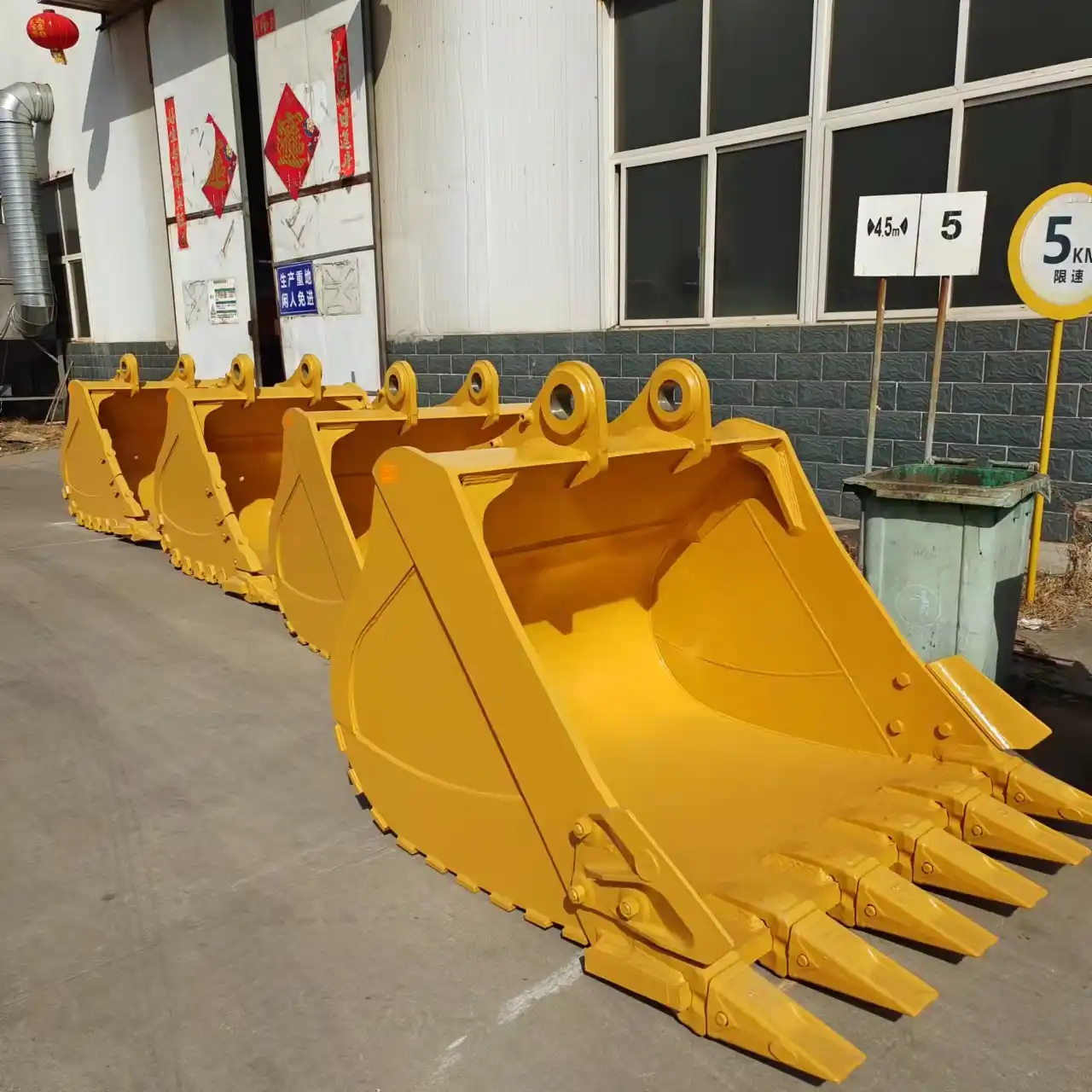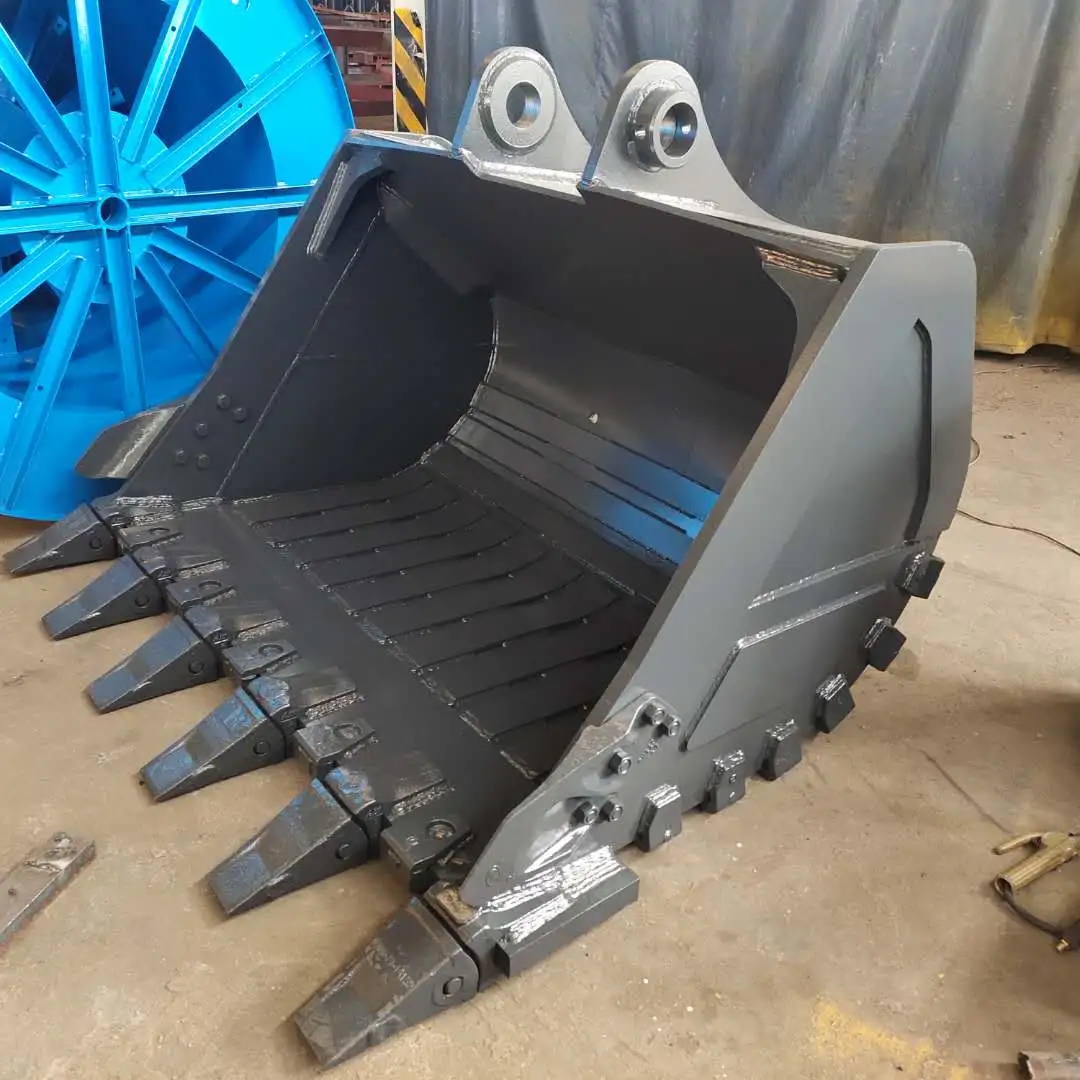How to measure excavator bucket size?
Measuring an excavator bucket correctly is essential for optimal performance and efficiency in construction, mining, and demolition projects. Accurate measurements ensure compatibility with your excavator and suitability for specific tasks. The process involves measuring three critical dimensions: pin diameter, dipper gap (width), and pin center spacing. These measurements allow operators to select the appropriate bucket for their excavator model and application requirements. Using precision measuring tools like calipers or measuring tapes, operators should measure existing buckets or attachment points to determine the correct specifications. Properly sized buckets maximize digging efficiency, reduce wear on equipment, and ensure safe operation. Whether replacing a worn bucket or upgrading to a different capacity, taking accurate measurements prevents costly downtime and ensures seamless integration with your excavator system.

Pin Diameter
Pin Diameter Importance
The pin diameter is a crucial measurement when selecting an excavator bucket for your machine. This dimension refers to the diameter of the connecting pins that secure the bucket to the excavator's arm or stick. Using an incorrectly sized pin can lead to premature wear, reduced performance, and potential safety hazards. Most standard excavators utilize pins ranging from 40mm to 100mm in diameter, depending on the machine size and model specifications. However, these measurements can vary between manufacturers and equipment series, making precise measurement essential when ordering replacement parts.
How to Measure Pin Diameter?
To measure pin diameter correctly, you need precision instruments like calipers or micrometers for the most accurate results. Begin by cleaning the existing pins to remove dirt, grease, or debris that might affect your measurements. Place the measuring tool perpendicular to the pin's length and measure across its widest point. For worn pins, take multiple measurements at different points to account for wear patterns. Remember that pins typically have slight manufacturing tolerances, so recording measurements to the nearest 0.1mm provides sufficient accuracy for ordering replacements. Always verify your measurements multiple times to ensure consistency.
Pin Material and Quality Considerations
The material composition of excavator pins significantly impacts durability and performance in the field. High-quality pins are typically manufactured from hardened alloy steel with specific heat treatments to enhance strength and wear resistance. When replacing pins, matching not just the diameter but also the material quality ensures consistent performance. Premium pins often feature chrome plating or specialized coatings that reduce friction and resist corrosion in harsh working environments. Consulting with reputable manufacturers like Tiannuo Machinery helps ensure you receive components that meet or exceed original equipment specifications, maximizing equipment uptime and operating efficiency in demanding applications.
Dipper Gap (or Dipper Width)

Defining Dipper Gap Measurements
The dipper gap, also referred to as dipper width, represents the internal width measurement of the excavator arm where the excavator bucket attaches. This critical dimension ensures proper alignment and fit between the bucket and machine. Measuring the dipper gap requires precision as even small discrepancies can result in improper bucket installation or operation. The measurement typically ranges from 150mm to 500mm on most commercial excavators, varying based on machine class and manufacturer design specifications. Accurately determining this measurement prevents potential equipment damage from forcing incompatible components together and ensures optimal bucket performance during operation.
Measurement Techniques for Different Excavator Models
Different excavator models require specific approaches when measuring dipper width. For standard models, measure the internal distance between the attachment plates on the excavator arm using precision calipers or a dedicated measuring bar. Compact excavators often feature narrower dipper widths, requiring extra attention to clearance tolerances. On larger equipment, you may need specialized measuring tools or assistance to obtain accurate readings. Always measure with the arm positioned horizontally and stabilized to prevent movement during measurement. For machines with bushings installed in the dipper ends, measure the internal distance between these bushings rather than the overall gap width to ensure compatibility with new buckets.
Impact of Incorrect Dipper Width on Performance
Using an excavator bucket with improper dipper width specifications leads to numerous operational issues. Buckets that are too narrow for the dipper gap create excessive play during operation, causing uneven force distribution, accelerated pin wear, and reduced digging precision. Conversely, buckets with excessive width measurements will not fit properly, potentially damaging connection points during installation attempts. Either scenario diminishes productivity and increases maintenance costs significantly. Improper width alignment also creates abnormal stress patterns during operation, potentially leading to premature structural failures in both the bucket and excavator components. Equipment operators may notice unusual vibrations, reduced control precision, or inconsistent bucket performance when width measurements are incompatible with the machine specifications.
Pin Center Spacing

Critical Importance of Pin Center Measurements
Pin center spacing represents the distance between the centers of the two connecting pins on an excavator bucket. This measurement is perhaps the most critical dimension when selecting replacement buckets as it directly impacts the bucket's operational arc and force distribution. Incorrect pin spacing prevents proper bucket articulation, creates binding during operation, and introduces dangerous stress concentrations on both the bucket and excavator arm. Different excavator models utilize standardized pin center measurements based on their size class and intended applications. Precision in this measurement ensures seamless bucket movement throughout the operational range while maintaining optimal force transfer from the hydraulic system to the digging edge.
Proper Measuring Process for Pin Centers
To accurately determine pin center spacing, start with a clean bucket placed on level ground with the mounting brackets accessible. Using a steel tape measure or precision caliper, measure from the center of one pin hole to the center of the other. For increased accuracy, take multiple measurements on both sides of the bucket and average the results. When measuring directly on the excavator arm, identify the center points of both pin locations and measure the straight-line distance between them. Recording measurements in millimeters provides the precision necessary for ordering compatible replacement components. Always verify measurements against manufacturer specifications whenever possible to confirm compatibility before purchasing new equipment.
Adapting to Different Pin Spacing Standards
Pin center spacing standards vary across equipment manufacturers and regional markets. North American manufacturers often use different standardized dimensions compared to European or Asian equipment producers. Universal adapters and conversion brackets are available to accommodate these differences when mixing equipment from different sources. When switching between brand-specific attachment systems, understanding the pin spacing variations helps determine if adapters are necessary or if direct replacement is possible. Custom fabrication services from specialized manufacturers like Tiannuo Machinery can produce buckets with specific pin center configurations to match your unique equipment requirements. This adaptation capability allows operators to utilize preferred bucket designs regardless of their excavator's original manufacturer specifications.
FAQ
1. What are the standard sizes for excavator buckets?
Excavator buckets typically range from 0.1 cubic meters for mini excavators to over 5 cubic meters for large mining equipment. Common sizes include 0.3m³, 0.5m³, 0.8m³, 1.2m³, and 2.0m³, though exact specifications vary by manufacturer and application requirements.
2 . How do I know if an excavator bucket will fit my machine?
Compatibility depends on three key measurements: pin diameter, dipper width, and pin center spacing. Match these dimensions precisely to your machine's specifications to ensure proper fit and operation.
3 . Can I use an adapter to fit different sized buckets?
Yes, bucket adapters allow fitting buckets with different pin configurations to your excavator. However, these may affect performance and should be used cautiously for safety and efficiency reasons.
4 . How often should excavator buckets be replaced?
Replacement timing depends on usage intensity and materials handled. Inspect buckets regularly for wear, cracks, or deformation. Most buckets last 1-3 years under normal operation before requiring replacement.
In construction and excavation projects, the proper selection of bucket size is of decisive importance for achieving optimal performance and efficiency. Whether the bucket size is well-matched directly affects the smooth operation of the equipment and thus influences the progress and profitability of the entire project. Precise measurement of key parameters such as pin diameter, dipper gap, and pin center spacing is the core element to ensure a perfect match between the selected bucket and the equipment. When these parameters are accurate, the equipment can not only operate at its peak efficiency, working continuously and stably, but also significantly reduce wear caused by component friction and collision. As a result, maintenance costs are substantially cut, providing a strong guarantee for the long-term and stable operation of the project.
Tiannuo Machinery specializes in the manufacturing of high-quality excavator buckets and various accessories, and its products are widely compatible with a variety of excavator models. With advanced production techniques and a strict quality control system, the buckets we produce feature excellent durability and high-efficiency operation capabilities, making them capable of meeting construction requirements under various complex working conditions. Whether it is the excavation of hard rocks or the handling of soft soil, Tiannuo Machinery's products can demonstrate outstanding performance. If you have any questions about our products or need professional guidance in choosing the right bucket for your needs, please feel free to contact us via email. You can send emails to arm@stnd - machinery.com, rich@stnd - machinery.com, or tn@stnd - machinery.com. Our professional team will respond promptly, providing you with detailed product information and accurate selection advice and fully assisting you in the smooth progress of your engineering construction.
References

Construction Equipment Maintenance Manual, 7th Edition, Equipment Manufacturers Association, 2023.
Stevenson, R.L., "Excavator Attachment Compatibility Guide," Construction Technology Journal, Vol. 45, 2022.
Huang, J.T., "Optimizing Excavator Performance Through Proper Attachment Selection," International Journal of Construction Engineering, Vol. 12, Issue 3, 2023.
Peterson's Complete Guide to Excavation Equipment, 5th Edition, 2024.
Williams, A.B., "Material Handling Efficiency in Modern Construction," Engineering Progress Review, Vol. 28, 2023.
About Author: Arm
Arm is a leading expert in the field of specialized construction and railway maintenance equipment, working at Tiannuo Company. Tiannuo specializes in manufacturing a wide range of products, including railway maintenance equipment like railway sleeper changing machines and screening machines, excavator modification equipment such as excavator lifting cabs, various engineering arms for excavators, excavator accessories like digging buckets, and engineering vehicle auxiliary equipment like loader buckets.

